Dedicated to sifting through the detritus accumulated in my studio life, Studio Debris
 Subscribe here to the STUDIO DEBRIS rss feed via the service of your choice.
Subscribe here to the STUDIO DEBRIS rss feed via the service of your choice.
Just 45 minutes north of Rome, Villa Adriana (Hadrian's Villa) is an archeological spectacle unparalleled in my experience. Nestled in the hills near Tivoli, the site was built by Emperor Hadrian to serve as his imperial palace on top of pre-existing Republican ruins, starting around 117 A.D. Today the site covers at least 80 hectares, of which we were able to explore extensively without encountering another human being for a stretch of two hours!
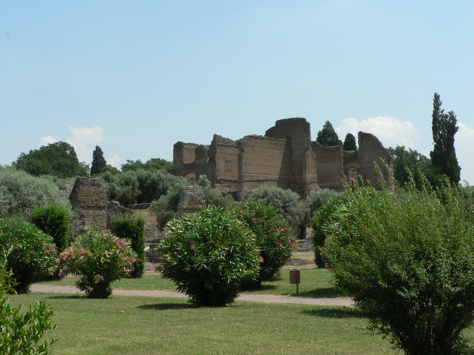
Like many adventures of mine in Italy, I left for this day trip with only a scant idea of what I was getting into...but fortunately brought along my pareo and a large bottle of Uliveto mineral water (the official water of the Italian national soccer team!). With temperatures hovering at 40ºC nell' ombra, (≤100ºF in the shade), I was glad for both the "insta-turban" properties of my pareo, and the historically advanced public water distribution technology of the Roman Empire!

Even though the Villa has been extensively looted throughout the centuries for building materials, marble sculptures and frescoes, certain treasures survive intact. Amongst the sun-bleached ruins: glimpses of art and interior design from almost 2,000 years ago. In the "Hospitalia" building (once reserved for guests and/or the Emperor's guard), each of the 10 sleeping rooms features three niches for beds, with a variety of black and white tiled mosaic floor designs in the center.
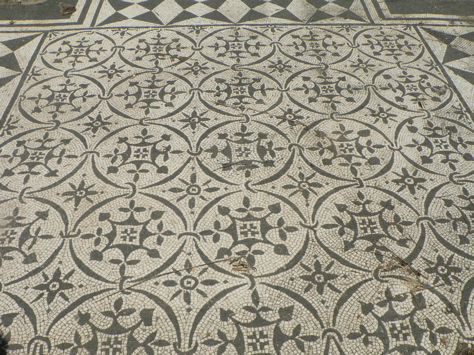
Referring back to the Roman Empire's innovations in water technology, the site retains the remnants of several termes (bath houses), which were constructed to take advantage of the plentiful solar energy for heating a myriad of marble-lined bathing pools. In surrounding piazzas and gardens, ingenious levelling was used to create decorative pools with moving cascades, serviing both to support the greenery and to delight visitors. Of course, today many lay dry...
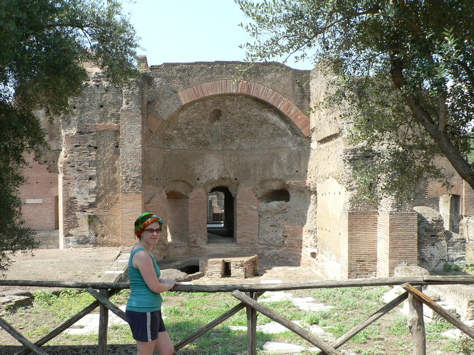
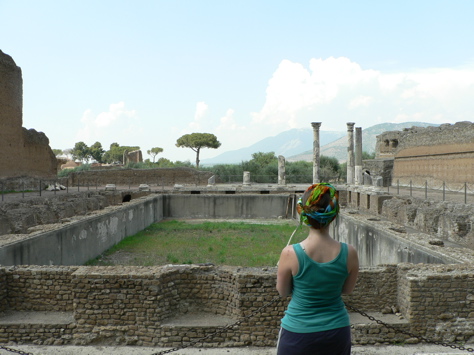
A couple of the Villa's landmarks, (like the statue-rimmed "Canopus") are kept filled with syrupy green water, perhaps to support this restored reptilian resident...and a myriad of real fish.
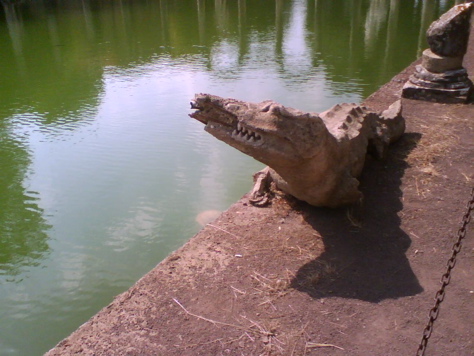
Impressively intact, an extensive network of underground passageways served as transit points for service personnel and supplies. Others, like the vaulted "Cryptoportico" served as cool strolling destinations for the Emperor during the hot summer months. While the ceiling frescoes have been all but destroyed by looting and target shooting (ahh, those pesky British nobles), grafitti dating from the seventeenth century to the present is clearly visible.
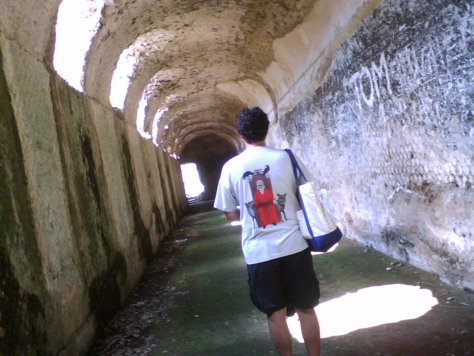
As an American, I'm accustomed to sharing my tourist sites with thousands of other sneaker-clad, snacking and shouting humans. In this case, the freedom of strolling the Villa without a hint of security guards, personnel or other visitors helped me to gain a better "feel" for Hadrian's grand imperial palace as it must have existed in antiquity.

Comments
Favolosa. Sono stata a Roma
Favolosa. Sono stata a Roma tante volte e non ho mai visto la Villa Adriana. Grazie per le foto sono favolose. Piera